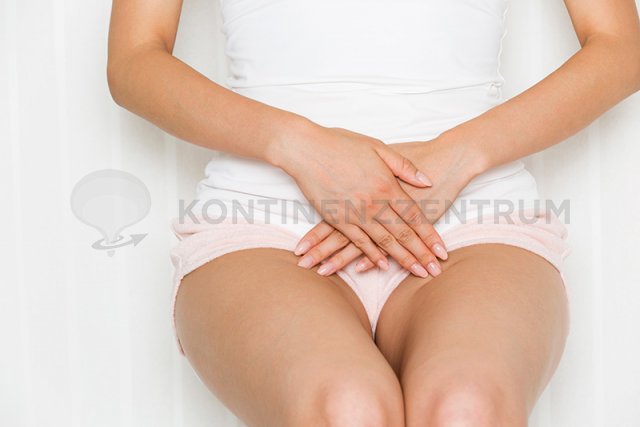Cystitis
Causes of cystitis

The efferent urinary tract is a cavity which transports urine produced in the right and left kidneys through various locations until it leaves the body. The renal pelvis and the ureter are referred to as the upper, while the bladder and urethra are referred to as the lower urinary tract. The urinary tract cavity is normally germ-free and the urine in it is sterile. The wall of the entire urinary tract is lined on the inside by a mucous membrane, rather like a carpet. The bladder wall and in particular the mucous membrane is very well connected with the body’s own defence system, and can combat bacteria that have penetrated the urinary tract.
The main entry route into the urinary tract is the urethra. This allows bacteria from outside the body to enter the urinary tract, where they can cause a urinary tract infection if the infection defence mechanism fails. Women are more likely to be affected than men because of the difference in the length of the urethra. The female urethra is 3 to 5 cm long and is considerably shorter than the male urethra, which is 15 to 18 cm long. This means that in women bacteria reach the bladder more quickly. As a result, women have a higher risk of bladder infection. It is normally germs from the intestinal flora that overcome the obstacle course to reach the bladder, where they trigger infection.
The Escherichia coli bacterium is responsible for two-thirds of cases of inflammation. Almost all women experience cystitis at least once in their lives, while many women suffer regular infections. In women who are sexually active, intercourse is the most common trigger of cystitis. The movements of the penis in the vagina cause germs to move through the urethra into the interior of the bladder and into urine.
Symptoms of cystitis
Whether cystitis then develops depends on the number of bacteria, how long they remain in the bladder and the individual susceptibility of the woman. If only a small number of germs reach the bladder, and if they are quickly flushed out again when the bladder is emptied, they do not come into contact with the bladder wall and so are unable to cause inflammation of the bladder wall.
But if a certain number of germs remain in the urine for a prolonged period, and if they are in contact with the bladder wall, they can become attached to the mucous membrane via the fine hairs that are present there. At that point they can transmit their toxins to the cells and so trigger inflammation. The bladder wall swells up, and a bladder examination shows it to be red and painful. Every woman knows what cystitis feels like: frequent urge to urinate, but the urination process produces only a small amount of urine, and it is painful and feels like burning.
Investigation and diagnosis of cystitis
In this situation, many women try to combat cystitis by drinking large amounts of fluid. If the infection has only just started, this flushes bacteria from the bladder and often cures the infection. However, if the bacteria have already managed to reproduce in large numbers and inflame the bladder wall, seeing a doctor and taking antibiotics is usually unavoidable. The first step is to take a urine sample from which the microbiologist tries to identify the germ responsible for the infection.
The doctor detects cystitis on the basis of three symptoms: the typical combination of symptoms involving more frequent and painful urination, the presence of microorganisms and white blood cells in the urine as signs of an inflammatory reaction by the body. It takes a few days to culture and identify the germ. Consequently, antibiotic treatment starts with a standard preparation which is either continued or switched to a different preparation depending on the urine test results. Antibiotics that are secreted in high concentrations into the urine via the kidneys, and so can combat the germs present in the urinary tract, are particularly effective.
Treatment of cystitis
A simple case of cystitis is normally treated by an antibiotic for a few days. After a one-day break, the urine should then be retested to ascertain the success of the treatment. Drinking plenty of liquid, especially “bladder tea”, supports antibiotic treatment and ensures that the symptoms abate rapidly.
However, a case of simple and easy-to-treat cystitis can take a serious course if it is not treated correctly or in time. If bacteria move from the bladder to the upper urinary tract, there is the possibility of renal pelvis inflammation, usually associated with pain in the side and fever. In this situation, intravenous administration of antibiotics and hospital observation are usually necessary.
Simple measures allow effective prevention of bladder inflammation
- Drink enough liquid to flush the bladder and urinary tract to remove bacteria.
- Dress warmly, especially in cold weather.
- If you feel the urge to urinate, make sure that you void your bladder soon and completely.
- Clean your genitals thoroughly but gently.
- After having a bowel movement, women must wipe from the vagina towards the anus.
- Urination after intercourse is also recommended in order to flush germs from the urethra.
- Men aged over 50 often suffer from an enlarged prostate, which interferes with the flow of urine, and this allows residual urine and pathogens to build up in the bladder where they can cause inflammation. In these cases, treatment of benign prostate enlargement can prevent repeated urinary tract infections.
